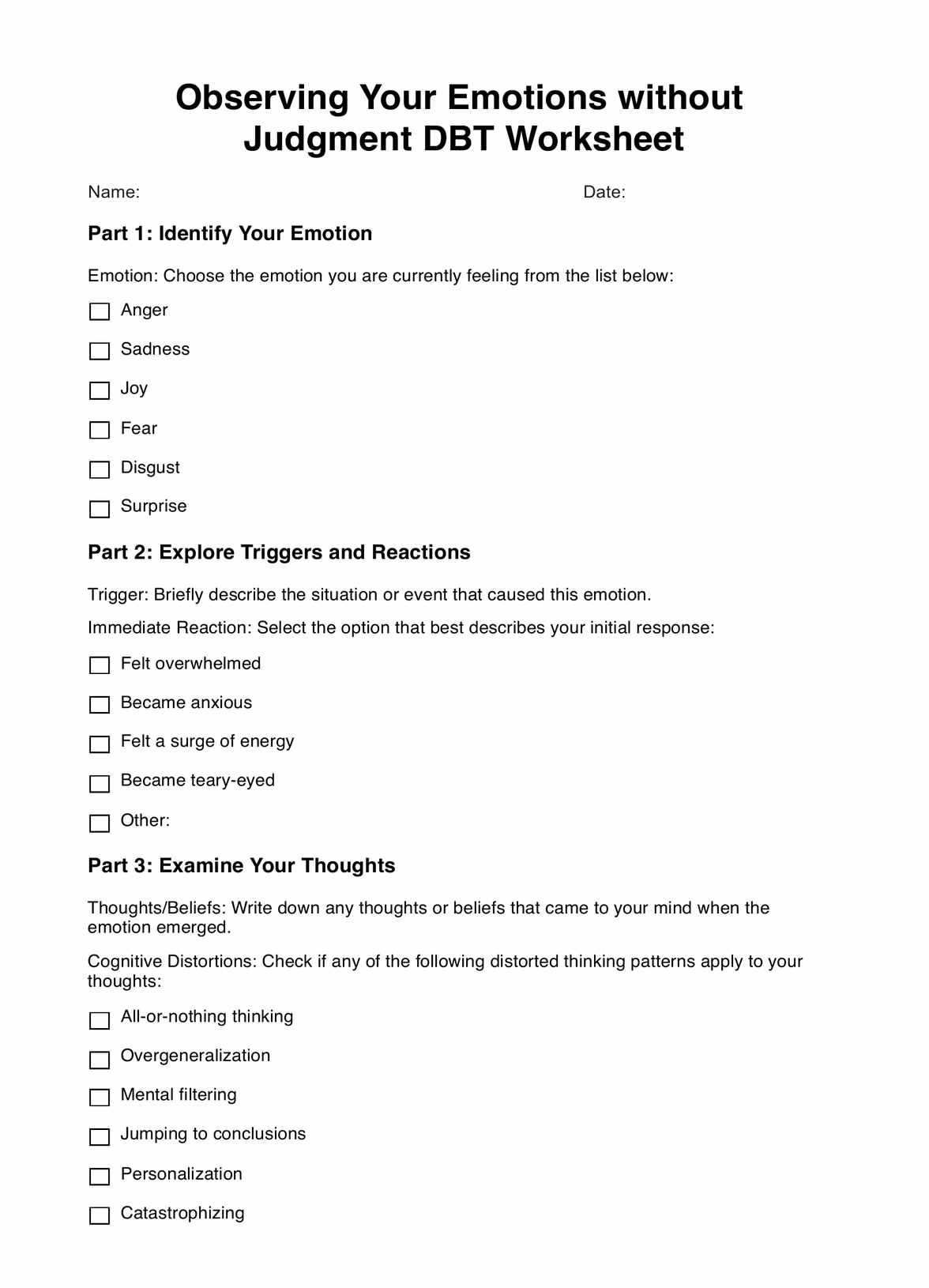The time needed can vary based on individual engagement and familiarity with the practice. Initially, it might take around 10-15 minutes, but the process becomes more efficient with regular use.

Observing Your Emotions without Judgment DBT Worksheet
Assist clients in understanding emotions and achieving emotional balance with Observing Your Emotions without Judgment DBT Worksheet.
Use Template
Observing Your Emotions without Judgment DBT Worksheet Template
Commonly asked questions
This worksheet enhances emotional awareness, reduces impulsivity, and fosters healthier emotional regulation, improving well-being and interpersonal interactions.
Use it when facing strong emotions, during therapy sessions, or as part of a daily mindfulness practice.
EHR and practice management software
Get started for free
*No credit card required
Free
$0/usd
Unlimited clients
Telehealth
1GB of storage
Client portal text
Automated billing and online payments











